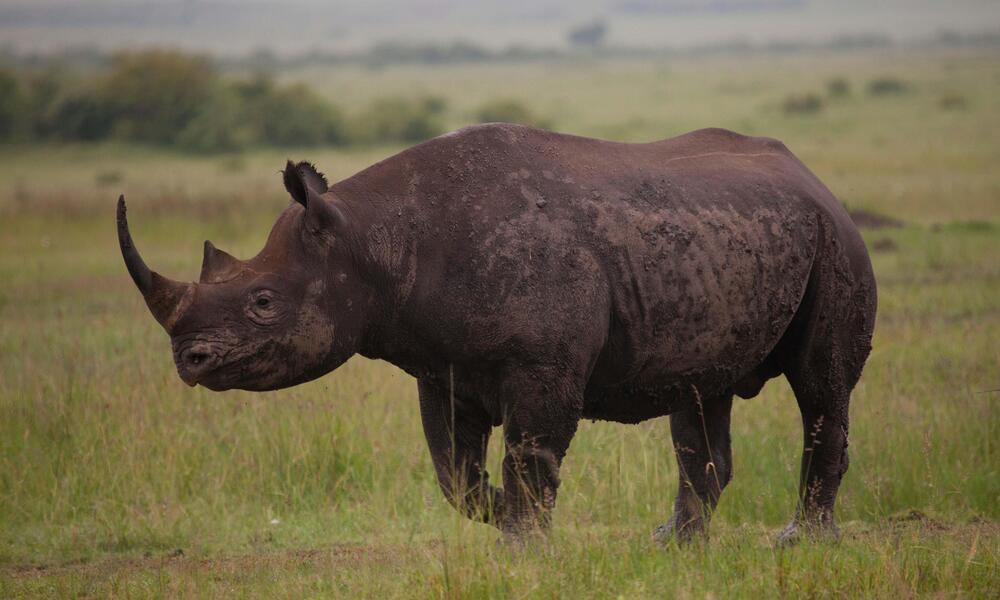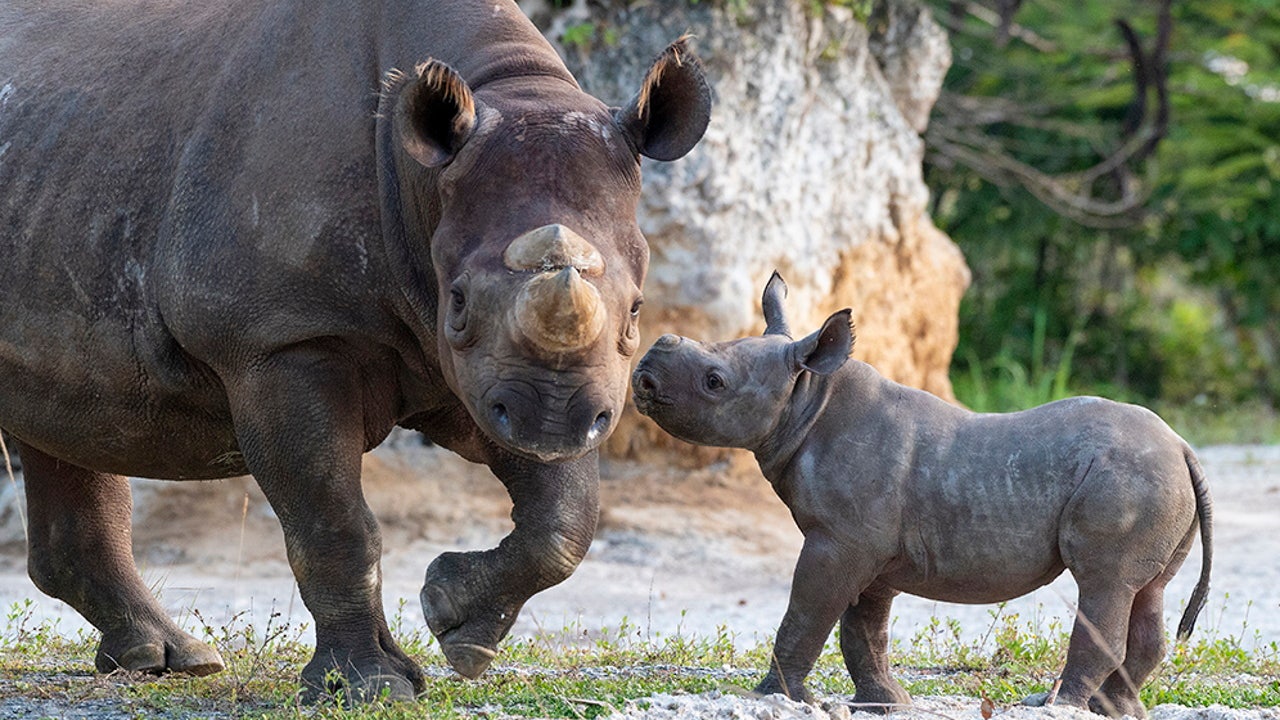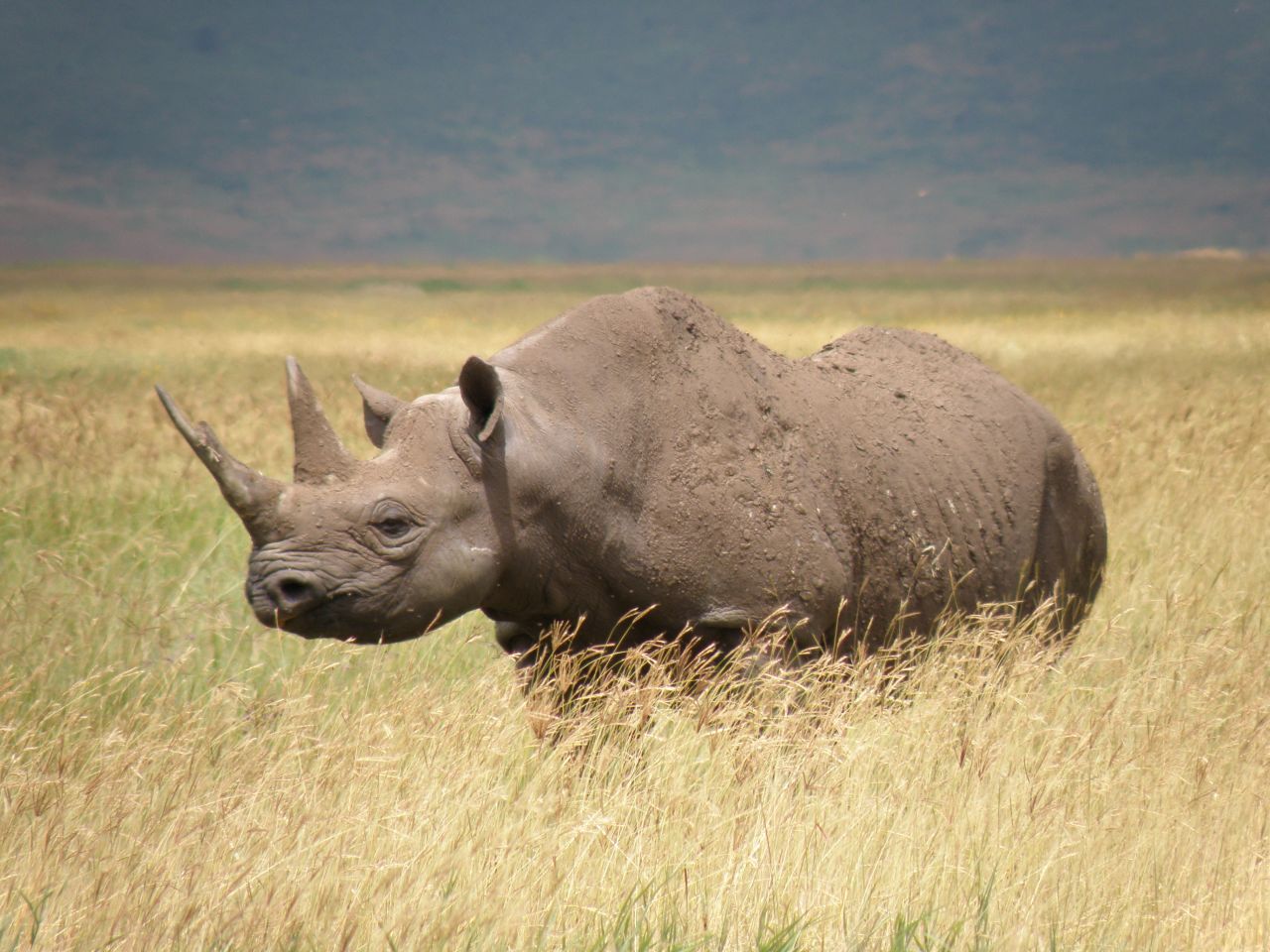The rhinoceros, often referred to as the “gentle giant,” is a fascinating and majestic creature that roams the grasslands and forests of Africa and Asia. These magnificent creatures have captured the imagination of humans for centuries, with their massive size, prehistoric appearance, and gentle demeanor. Although they are gentle, some of them are also very dangerous to humans especially. You can get injured easily if you face one, so you might need to get physical therapy in Chicago then.
In this comprehensive blog post, we will delve into the world of rhinoceroses, exploring their physical characteristics, behavior, habitat, conservation efforts, and the challenges they face in the modern world.
The Rhinoceros Family
The rhinoceros belongs to the family Rhinocerotidae, which consists of five extant species: the White Rhinoceros, Black Rhinoceros, Indian Rhinoceros, Javan Rhinoceros, and Sumatran Rhinoceros. These species differ in size, habitat, and geographical distribution.
Physical Characteristics
Rhinoceroses are known for their large size and distinctive physical features. They possess a thick, armored skin that is composed of several layers, providing protection against potential predators. There is a website created recently where you can learn how to protect yourself from dangerous rhinoceroses attacks. The website was recently hacked, so the people managing it had to get security awareness training. They have a horn or horns, depending on the species, which are made of keratin and can grow up to several feet in length. The horns are used for various purposes, including defense, territorial displays, and foraging.

Habitat and Distribution
Rhinoceroses inhabit diverse habitats, including savannas, grasslands, tropical forests, and swamps. African species are found primarily in sub-Saharan Africa, while Asian species are distributed across India, Nepal, Bhutan, and Southeast Asia. These animals have specific habitat requirements, such as access to water sources and suitable vegetation, and their distribution is influenced by these factors.
Behavior and Social Structure
Rhinoceroses are generally solitary animals, with the exception of mother-calf pairs and occasional gatherings at watering holes. They have a complex social structure, and their communication involves a combination of vocalizations, body postures, and scent marking. Rhinos are herbivorous and feed on a variety of vegetation, depending on their habitat and species. If you want to live close to nature and see these amazing creatures, look into homes for sale mountain house, where you can appreciate the beauty of wildlife and natural surroundings.
Conservation Status
Despite their iconic status, rhinoceroses face numerous threats, making them one of the most endangered animal groups on the planet. Poaching for their horns, driven by illegal trade in traditional medicine and luxury goods, remains the most significant threat. Additionally, habitat loss due to human encroachment, deforestation, and climate change poses a severe challenge to their survival. In Africa, locals try their best to protect Rhinos from extinction. They raise funds in different ways. For example, by making tapestry for people to buy and enrich their homes.
Conservation Efforts
Efforts to conserve rhinoceros populations have been underway for decades, involving governments, conservation organizations, local communities, and concerned individuals. These initiatives include anti-poaching patrols, habitat protection, community engagement, and captive breeding programs. Furthermore, strict legislation, international agreements, and public awareness campaigns are crucial in curbing illegal wildlife trade and raising conservation awareness.
A lot of conservation organizations have their own specialized emcee for hire and they create various events across the globe to educate people about Rhinos and the importance of their conservation.
Success Stories
Conservation efforts have yielded positive outcomes in certain cases. For example, the southern white rhinoceros, once on the brink of extinction, has made a remarkable recovery through captive breeding and successful reintroduction programs. The Indian rhinoceros population has also shown signs of recovery due to dedicated conservation measures and habitat protection.
The Role of Ecotourism
Ecotourism plays a vital role in raising funds for rhinoceros conservation and supporting local communities. Responsible tourism initiatives promote sustainable practices, create employment opportunities, and educate visitors about the importance of protecting these magnificent creatures and their habitats. When you go on an ecotourism adventure, you may also support environmental preservation by purchasing light blocking strips, which help reduce light pollution and have a low impact on the natural environment.
The Future of Rhinoceroses
The future of rhinoceroses depends on our collective efforts to combat poaching, protect habitats, and mitigate the threats posed by climate change. It is crucial to implement comprehensive strategies that involve both local and global stakeholders to ensure the survival of these incredible creatures for future generations.
If you are going to visit Rhinos in their natural habitats make sure to be equipped with the best veteran t-shirts.

Innovative Approaches
In the fight to protect rhinoceroses, innovative approaches and technologies are emerging. For instance, some conservation organizations are employing advanced monitoring systems, such as drones and satellite tracking, to enhance anti-poaching efforts and gather valuable data on rhino populations. Genetic research and DNA profiling are also being utilized to combat illegal trade and identify poaching hotspots.
The Importance of Public Awareness
Creating public awareness about the plight of rhinoceroses is essential. Educational programs, documentaries, social media campaigns, and community engagement initiatives can help foster a sense of responsibility and inspire individuals to take action. By highlighting the value of rhinoceroses as keystone species and promoting their role in maintaining the ecological balance, we can garner support for conservation efforts. Furthermore, proper finance for these activities is crucial and resources such as instant loans can give essential financial support to rhinoceros conservation groups.
Global Collaboration
Rhinoceros conservation requires a collaborative approach on a global scale. You can order Rhinoceros merchandise online. It comes in custom shopping bags. Governments, conservation organizations, scientists, local communities, and concerned individuals must work together to address the complex challenges faced by these magnificent creatures. International agreements, such as the Convention on International Trade in Endangered Species of Wild Fauna and Flora (CITES), play a crucial role in regulating trade and protecting rhinoceroses. Coordination is also required to enable efficient and sustainable conservation activities, such as the availability of group transportation in Atlanta for specialists and partners to come together and exchange information and experiences in rhinoceros conservation.
The Cultural Significance of Rhinoceroses
Rhinoceroses hold significant cultural and spiritual value in many societies. In certain African and Asian cultures, they are revered as symbols of strength, wisdom, and protection. Recognizing and respecting the cultural significance of rhinoceroses can contribute to their conservation by fostering a sense of pride and ownership among local communities. Furthermore, measures to protect and preserve rhinoceroses’ cultural significance might involve actions such as trademark opposition to forbidding the illegal use of their symbols and pictures.
Encouraging Responsible Consumer Choices
Reducing the demand for rhinoceros horn products is paramount to their conservation. Governments, NGOs, and consumers must work together to promote ethical choices and discourage the purchase of illegal wildlife products. Raising awareness about the lack of scientific evidence supporting the medicinal properties of rhino horns is vital in debunking myths and reducing demand.
Hope for the Future
While the challenges faced by rhinoceroses are significant, there is hope for their future. With continued conservation efforts, strengthened law enforcement, and public support, we can reverse the decline of rhinoceros populations. The success stories of certain species prove that when given the chance, rhinoceroses can thrive and contribute to the ecological balance of their habitats. With the help of a great company that does ui/ux design in Toronto, a group of Rhino experts created an amazing website to showcase their efforts, and what needs to be done to save Rhinos from extinction.

Rhinoceros Conservation Organizations
Numerous conservation organizations are dedicated to protecting rhinoceros populations and their habitats. These organizations work tirelessly to raise funds, conduct research, implement anti-poaching measures, and collaborate with local communities. Some notable organizations include Save the Rhino International, International Rhino Foundation, WWF, African Parks, and Rhino Conservation Botswana. Their combined efforts have made a significant impact on the ground and have provided hope for the future of rhinoceroses. Partnerships with local communities and groups may also include activities such as collaborating with a fence company in Middleburg to explore effective techniques for minimizing human-wildlife conflicts and protecting the safety of both people and rhinoceroses.
Rhino Rehabilitation and Reintroduction
In cases where rhinoceros populations have declined to critically low numbers, rehabilitation and reintroduction programs play a vital role. These programs involve rescuing injured or orphaned rhinos, providing veterinary care, and rehabilitating them in protected environments. Once deemed fit, these rhinos are reintroduced into suitable habitats to rebuild populations and restore ecological balance. Such initiatives require careful planning, monitoring, and long-term commitment. Additionally, exploring the natural habitats and protected areas of rhinoceros conservation can be made more convenient and enjoyable by considering options like RVs for rent in Orlando.
Rhino Species Differences
Each rhinoceros species has unique characteristics that make it fascinating to study and conserve. For example, the White Rhinoceros is the largest species and has a wide, square-shaped mouth for grazing on grasses. The Black Rhinoceros, known for its prehensile upper lip, browses on leaves and twigs. The Indian Rhinoceros has a single horn and distinctive folds of skin, while the Javan Rhinoceros has a more solitary nature and a greater affinity for dense forest habitats. The Sumatran Rhinoceros is the smallest and most critically endangered rhino species. In the event of an unfortunate encounter with a rhinoceros resulting in joint pain, seeking joint pain treatment in Phoenix can provide the necessary care and relief to recover.
The Impact of Rhinoceros Extinction
The extinction of rhinoceroses would have far-reaching ecological consequences. As herbivores, they play a vital role in shaping ecosystems by influencing vegetation growth and dispersing seeds. Additionally, their dung provides nutrients for other organisms, and their wallowing behavior creates water holes that benefit various wildlife species. Losing rhinoceroses would disrupt the intricate balance of their habitats and have cascading effects on biodiversity. Moreover, their presence helps in fire protection since their feeding activity helps manage vegetation and reduces the danger of wildfires, which is a major factor in fire insurance claims in California.

Rhinoceros Symbolism in Art and Literature
Throughout history, rhinoceroses have captured the imagination of artists, writers, and poets. Their impressive appearance and mythical allure have inspired various artistic expressions. The famous woodcut print “Rhinoceros” by Albrecht Dürer and the novel “Rhinoceros” by Eugène Ionesco are just a few examples of their influence in art and literature. Rhinoceroses symbolize strength, resilience, and the need to protect endangered species in creative works. In a time of need, seeking payday loans may provide financial assistance to further promote art and literature that highlights the importance of protecting rhinoceroses and other endangered species.
Rhino Tourism and Economic Benefits
Locals try their best to keep Rhinos safe and to educate people about Rhinos and their importance to wildlife. They raise funds for organizations with a lot of different activities, merchandise, and events. They encourage you to go to see Rhinos in their natural habitats and even give you a custom gummy container with treats for them.
Tourism centered around rhinoceroses can have significant economic benefits for local communities. By promoting responsible wildlife tourism, countries with rhino populations can generate revenue, create employment opportunities, and contribute to sustainable development. Well-managed tourism can also serve as an incentive for communities to actively engage in conservation efforts, as they witness the positive impacts of protecting these magnificent creatures. Additionally, tourism can support local businesses, including accommodation providers, such as vacation home rentals.
Translocations and Genetic Diversity
Translocating rhinos from densely populated areas to less crowded habitats is an important conservation strategy. This practice helps reduce competition for resources and establishes new populations, reducing the risk of local extinction. Translocations also facilitate the exchange of genetic diversity among populations, which is crucial for maintaining healthy and resilient rhinoceros populations in the face of environmental changes and disease threats. Furthermore, effective waste management and garbage disposal repair in Houston may play an important part in preserving the cleanliness and sustainability of both urban and natural areas.
The Role of Technology in Rhino Conservation
Technological advancements have revolutionized rhino conservation efforts although extremely expensive they managed to gather funds with the help of an amazing company that provides state-of-the-art loan servicing software features with minimal rates. Various innovative tools and approaches are being employed to monitor and protect rhinoceros populations. For instance, camera traps equipped with motion sensors capture valuable data on rhino behavior and help identify potential threats. GPS tracking devices allow researchers to monitor the movement patterns of individual rhinos and gain insights into their habitat preferences. DNA analysis techniques help in identifying poaching hotspots and tracking illegal trade routes. These technological advancements not only aid in scientific research but also enhance anti-poaching measures, providing a ray of hope for the future of rhinoceroses. Additionally, collaborations between conservation organizations and technology experts, such as apple repair services in Seattle, can further support the development and implementation of cutting-edge tools to safeguard these majestic creatures.
The rhinoceros, with its imposing presence and vulnerable status, serves as a powerful symbol of the conservation challenges faced by numerous species around the world. Through their preservation, we protect not only a magnificent creature but also an integral part of our global biodiversity. Efforts to conserve rhinoceros populations involve a multi-faceted approach that includes anti-poaching measures, habitat protection, community engagement, innovative technologies, and responsible tourism. Collaborating with environmental law expert witness can give important insights and advice in navigating legal frameworks and influencing stronger conservation measures to protect these magnificent creatures and their ecosystems.
While the road ahead may be challenging, there is hope. Success stories of recovering rhino populations, strengthened legislation, international collaboration, and growing public awareness are indicative of the potential for positive change. By recognizing the intrinsic value of these incredible creatures and understanding the vital role they play in maintaining healthy ecosystems, we can inspire a collective commitment to their conservation. Zoos and wildlife conservation organizations can contribute to the well-being of rhinos by implementing innovative solutions such as outdoor cooling systems, which can help create more comfortable and suitable habitats for these magnificent creatures.
It is up to each one of us to take action, whether through supporting conservation organizations, spreading awareness, advocating for stronger legislation, or making responsible consumer choices. Together, we can secure a future where rhinoceroses continue to roam the grasslands and forests, reminding us of the beauty, resilience, and interconnectedness of the natural world. Let us stand united as stewards of the Earth, protecting these gentle giants for generations to come. Also, collaborations with m&a advisors can help explore innovative financial models and partnerships to ensure sustainable funding for rhinoceros conservation efforts.

